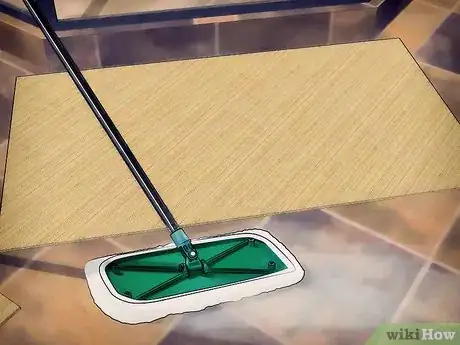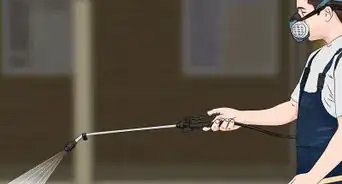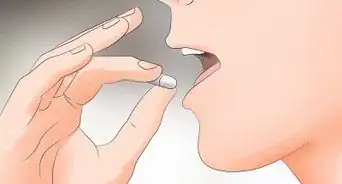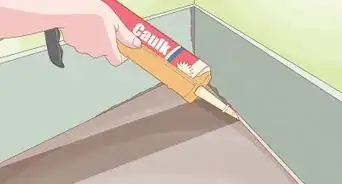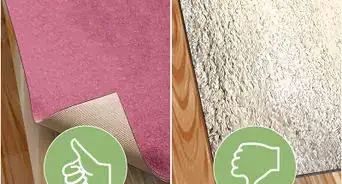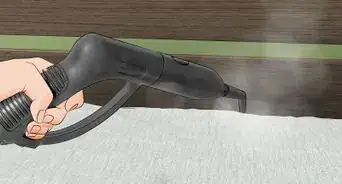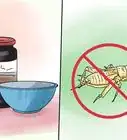wikiHow is a “wiki,” similar to Wikipedia, which means that many of our articles are co-written by multiple authors. To create this article, 30 people, some anonymous, worked to edit and improve it over time.
wikiHow marks an article as reader-approved once it receives enough positive feedback. This article received 23 testimonials and 91% of readers who voted found it helpful, earning it our reader-approved status.
This article has been viewed 1,318,670 times.
Learn more...
House centipedes are generally harmless, but spotting these many-legged creepy-crawlies in your home can be cringe-inducing—it's understandable if you don't want them as guests! In this article, we'll explain exactly how to get rid of centipedes in and around your home, and we'll also provide useful prevention tips so they'll never return. If you're ready to get a leg up on your centipede problem and give these creatures the boot once and for all, read on!
Things You Should Know
- Put sticky traps in the corners and crevices of your home to catch centipedes and the insects that centipedes feed on.
- Spray a chemical insecticide that contains pyrethroids around baseboards, windows, crevices, doors, and the outdoor perimeter of your home.
- For a natural solution, sprinkle diatomaceous earth or boric acid across your home's entry points and exterior.
- Prevent centipedes by reducing moisture inside your home and removing any organic debris like leaf litter around your house.
Steps
Killing Centipedes
-
1Set up sticky traps in your home's corners and crevices. Sticky traps are effective at catching centipedes, and they'll also capture other insects in your home that the centipedes are feasting on. Centipedes will definitely be less interested in hanging out at your house if you eliminate their food source.[1]
- Don't forget to check your sticky traps regularly and dispose of the insects.
- Sticky traps can also alert you to heavy traffic areas. If one of your sticky traps turns out to be really popular, you can focus your efforts there.
- Sticky traps work best for smaller centipedes. Larger centipedes may walk over sticky traps and escape by simply leaving behind a few of their legs.
-
2Spray chemical insecticides around baseboards, windows, and doors. To kill centipedes on contact, look for synthetic insecticides that contain pyrethroids (cyfluthrin, deltamethrin, lambda-cyhalothrin, cypermethrin, permethrin or tralomethrin). Apply the insecticide spray along points of entry like baseboards, cracks, crevices, doors, and windows to create a barrier of protection.[2]
- Apply a barrier of insecticide around the exterior of your home, as well, to prevent new centipedes from coming in.
- Remember that chemical pesticides are poisonous! Read and follow the product's directions carefully, and keep these chemicals away from kids and pets.
Advertisement -
3Use diatomaceous earth or boric acid if you prefer non-toxic options. Natural dusts like boric acid and food grade diatomaceous earth kill centipedes and work well for continual centipede control. Sprinkle the dust at points of entry (baseboards, cracks, crevices, doors, and windows).[3]
- Sprinkle the dust around the exterior perimeter of your home, too, so new centipedes can't make it indoors. If they happen to make it inside, they should be dead or near death by the time you find them. Just wipe or vacuum them up when you see them.
-
4Hire a professional exterminator to knock out tough infestations. If you've tried everything to get rid of the centipedes and you're still seeing them around your home, it may be time to hire an exterminator. Exterminators crawl your home for potential entrance points, locate and destroy centipede eggs, and spray with effective commercial pesticides to get rid of centipedes for good.
Preventing Centipedes
-
1Get rid of other pests in your home. Centipedes feast on spiders and other types of small insects that are common in and around residential spaces. Eliminating their food source is a great way to prevent centipedes from coming back (and starve out any that are still hanging around).[4]
-
2Reduce moisture indoors and keep your home dry. Centipedes are attracted to moist environments and need moisture to survive; without it, they'll dry out and die. Use a dehumidifier inside your home to get rid of moisture in the air and fix any indoor leaks that you have.[5]
- Place packets of silica in the dampest places of your home. Silica is an absorbent that wicks away moisture from the air and ground.
- Close or block off your sink and tub drains, if possible.
-
3Remove organic material around your home's exterior. Place firewood, mulch, tarpaulins, and compost bins away from the perimeter of the house and as far away as possible. Move or dispose of compost, leaves, wood, and any other organic debris around the outside of your house.[6]
- Clean out the gutters and downspouts around your home, as well. Leaves, branches, and other debris can block the water flow and create the perfect environment for centipedes.
- Cleaning up clutter in damp indoor areas, like basements, can also discourage centipedes from taking up residence there.
-
4Seal cracks and crevices with caulk or expanding foam. Check around your home for cracks in concrete foundation and fill them in with caulk. It also helps to caulk the spaces around doors and windows to eliminate gaps where centipedes get inside.[7]
- Apply weatherstripping to discourage centipedes.
- Caulk any holes between the walls in your home, as well.
Community Q&A
-
QuestionCan I smush the centipede with my shoe?
 wikiHow Staff EditorThis answer was written by one of our trained team of researchers who validated it for accuracy and comprehensiveness.
wikiHow Staff EditorThis answer was written by one of our trained team of researchers who validated it for accuracy and comprehensiveness.
Staff Answer wikiHow Staff EditorStaff AnswerSure, but then you'll have to clean up the mush! If you need to get rid of a single centipede quickly and you don't want to deal with a mess, vacuum it up with a hose attachment instead.
wikiHow Staff EditorStaff AnswerSure, but then you'll have to clean up the mush! If you need to get rid of a single centipede quickly and you don't want to deal with a mess, vacuum it up with a hose attachment instead. -
QuestionHow can I stop centipedes from entering my house?
 wikiHow Staff EditorThis answer was written by one of our trained team of researchers who validated it for accuracy and comprehensiveness.
wikiHow Staff EditorThis answer was written by one of our trained team of researchers who validated it for accuracy and comprehensiveness.
Staff Answer wikiHow Staff EditorStaff AnswerSpray a chemical insecticide that contains pyrethroids around baseboards, windows, crevices, doors, and the outdoor perimeter of your home. If you prefer a natural solution, sprinkle diatomaceous earth or boric acid across your home's entry points and around the exterior.
wikiHow Staff EditorStaff AnswerSpray a chemical insecticide that contains pyrethroids around baseboards, windows, crevices, doors, and the outdoor perimeter of your home. If you prefer a natural solution, sprinkle diatomaceous earth or boric acid across your home's entry points and around the exterior. -
QuestionWill Lysol spray kill them if you spray the baseboards or directly on them?
 wikiHow Staff EditorThis answer was written by one of our trained team of researchers who validated it for accuracy and comprehensiveness.
wikiHow Staff EditorThis answer was written by one of our trained team of researchers who validated it for accuracy and comprehensiveness.
Staff Answer wikiHow Staff EditorStaff AnswerA direct hit of Lysol might slow a centipede down and it could possibly even poison/kill it, but it's really not an effect control measure. If you have a large infestation, try using a synthetic insecticide that contain pyrethroids instead.
wikiHow Staff EditorStaff AnswerA direct hit of Lysol might slow a centipede down and it could possibly even poison/kill it, but it's really not an effect control measure. If you have a large infestation, try using a synthetic insecticide that contain pyrethroids instead.
Warnings
- Be careful using pesticides since they're poisonous. Read the instructions carefully and keep them out of reach of children and pets.⧼thumbs_response⧽
References
- ↑ https://extension.psu.edu/house-centipedes
- ↑ https://ento.psu.edu/extension/factsheets/house-centipedes
- ↑ https://ento.psu.edu/extension/factsheets/house-centipedes
- ↑ https://ento.psu.edu/extension/factsheets/house-centipedes
- ↑ https://www.haltonwildlife.ca/6-tips-getting-rid-centipedes/
- ↑ https://www.angi.com/articles/how-to-get-rid-centipedes.htm
- ↑ https://ento.psu.edu/extension/factsheets/house-centipedes
- ↑ https://todayshomeowner.com/pest-control/guides/how-to-easily-get-rid-of-house-centipedes/
About This Article
To get rid of centipedes, try sprinkling some cayenne pepper around the entryways to your home, which will deter the centipedes so they don't come inside. You can also try setting up some sticky traps on the floors around your home to catch the centipedes when they walk on them. If the centipedes persist, sprinkle a natural pesticide, like boric acid or diatomaceous earth, over the areas where you usually spot them. For more tips, like how to seal off entrance points to your home so centipedes can't get in, keep reading!





